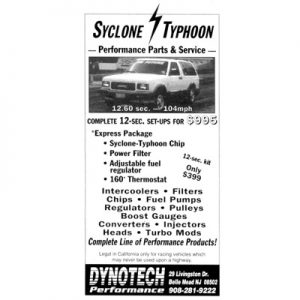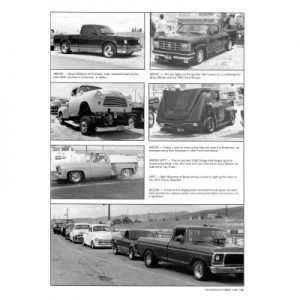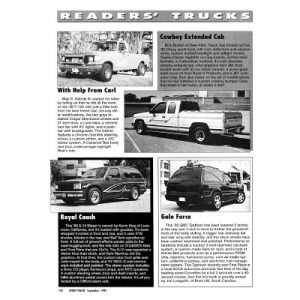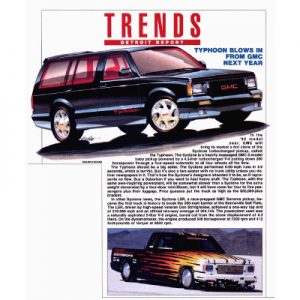Turbo & Hi-Tech Performance
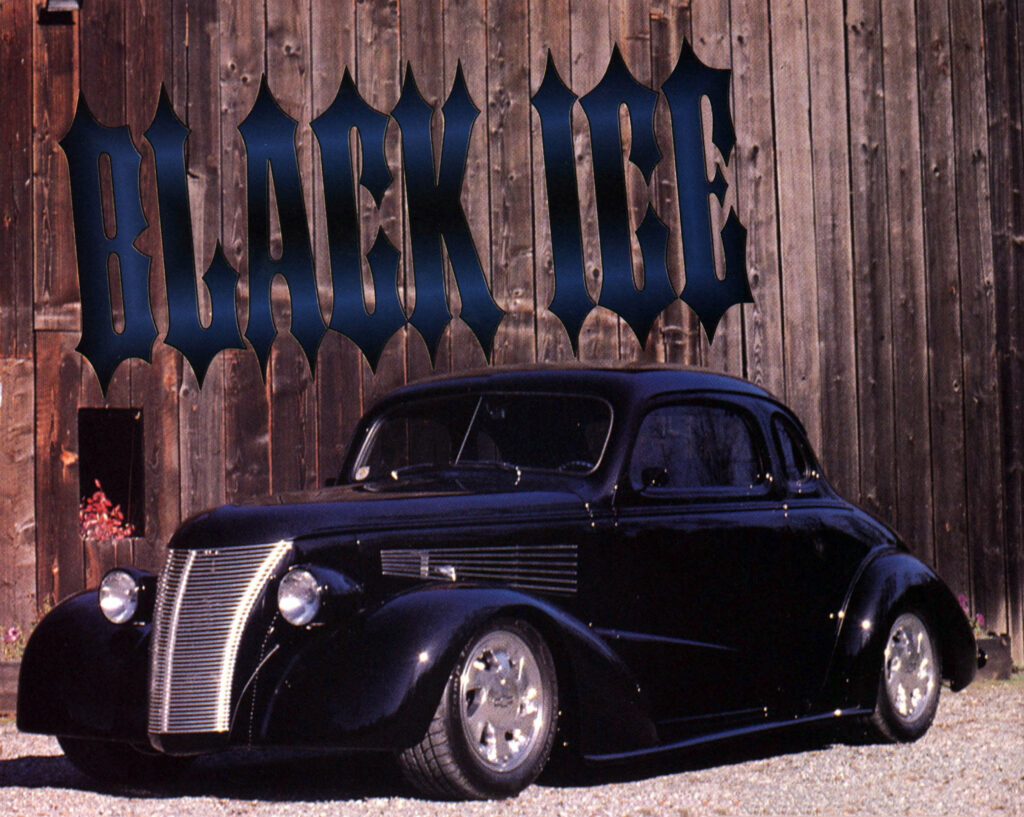
What do you get when you cross a turbocharged all-wheel drive pickup and the venerable lines of a ’38 Chevy coupe?-a handful. Ted Youngren, who hails from Seattle, Washington has been collecting custom-crafted cars for quite some time. His collection has been growing of late, and currently features a wide variety of vehicles. He owns a GTO Judge and a mid-year ‘Vette in the muscle car category, a ’55 Chevy with an EFI 350 cubic-inch Chevy and late-model ‘Vette rearend in the classic iron category and a ’67 Ranchero powered by a Ford Motorsport powerplant in the Pro Street truck category.
His latest addition to the collection is a combination of a classic rod and a leading-edge performance truck. Youngren had a GMC Typhoon and wanted to transplant the truck’s entire all-wheel drive, turbocharged powertrain into something really awe inspiring. Dan Peterson of Hot Rod Enterprises had just what the doctor ordered- a 1938 Chevy two-door coupe.
While most figure splicing in a Typhoon drivetrain would be an incredible feat of engineering, the guys at Hot Rod Enterprises say it was a relatively simple undertaking, although the planning stages were quite time consuming. Since the ’38 coupe and Typhoon pickup have an almost identical wheelbase and nearly equal track width, locating the drivetrain was a fairly straightforward procedure. The Typhoon’s Borg Warner 4472 all -wheel drive system uses a viscous coupling to provide a 35- to 65-percent split of torque from front to rear. The system combats wheel spin during hard acceleration and enhances cornering by using the viscous coupling to distribute power to the wheel with the best traction. The major headache was relocating the engine. The 4.3-liter Vortec V6 was mounted 12 inches rearward and a bit lower than it was in the pickup. This meant the front torsion bar suspension was scrapped, and in its place we find standard hot rod fare-Aldan coil-over shocks. The old-timer even utilizes the GMC’s steering linkage. The entire chassis communicates with the road through P245/50Z R- 16 BFGoodrich Comp T/As and polished OEM Typhoon wheels.
With the center of gravity so much lower than that of a truck, the Typhoon’s standard multi-leaf suspension was ditched for something more trick. The ’38 traverses the road via a three-link rear set-up with Aldan coilovers and a panhard rod.
The aforementioned steering components as well as the all-wheel drive differentials, disc brake assemblies and the ABS system all work flawlessly thanks to the ingenuity of Andy Osborne. The ABS system put up quite a fight. Due to the tight quarters under the hood, the power brake booster is now located under the floorboards near the brake pedal. Some of the engine electronics found a home under the dashboard, inside, where the effect of harsh Washington weather cannot do them harm.
With the chassis and drive train positioned, it was time to align the body panels. The cab sits on custom-fabricated mounts which adhere it to front and rear GMC subframes which, in turn, are connected to a custom frame. The car’s glass fenders were radiused and sectioned by two inches to perfectly frame the rolling stock. The hood was also stretched four inches as components and accessories on the Vortec V6 interfered with the grille and sheetmetal. The magic in and around the engine bay was executed by sheetmetal wizard Craig Wick. Larry Barnes of Illuminations gets credit for the immaculate polishing and fine detail work that fills the engine compartment.
Once lined up and bolted down, the body was prepped and painted by Jon Byers Custom Paint. The Jet Black hue, arrived at by mixing Spies Hecker paint, is a high solids content, base/clearcoat mixture and is the driving force behind the car’s name-Black Ice, The custom color required only two coats followed up by three layers of clearcoat and meticulous polishing to net the results we see here.
The same attention to detail found under the hood and on the sheetmetal can be seen in the coupe’s cabin. Wanting to cruise the Seattle streets in comfort , Youngren enlisted Rocky Peters and crew at Parkland Upholstery to spruce up the interior. A pair o f late-model Mustang buckets were wrapped in leather and matching Mercedes woven tweed. Other modern interior appointments include a Vintage Air air conditioning unit nestled under the dash, a six·speaker GMC stereo system and a hand brake mounted under the driver’s seat. The manner in which the tweed and leather tie into the carpet and the use of the stock automatic transmission shifter and GMC gauge cluster help unify the interior visually.
Rest assured, Black Ice impacts on much more than a visual level. Driving on some nearby back roads we found the old-timer quite willing. The first thing we noticed was, despite its height, the ’38 doesn’t handle remotely like the original issue. The low-slung engine and all-wheel drive configuration combine to give the Chevy nimble ’round-the-curve manners and the ability to get down the road in short order when the go pedal is pressed. The coupe stops like a ’90s vehicle as well thanks to the three-channel ABS system. We got a kick out of spooling up the turbos at speed, feeling the car jump forward and then getting off the gas so the relief valve would hiss at us as if the motor was angry. Horsepower is boosted to around 300 with a Hypertech chip and a stainless steel exhaust system.
The ’38 Typhoon coupe represents the best of hot-rodding techniques, wrapping the classic lilies of a ’30s vintage street rod around a potent ’90s drivetrain. Black Ice is a goer as it sees occasional commute duty and is driven on the weekends as well. Youngren seems content with the ’38 and is getting the urge for another project- a V12 or LT-5-powercd 1955 Chevy Nomad. Sounds serious.

